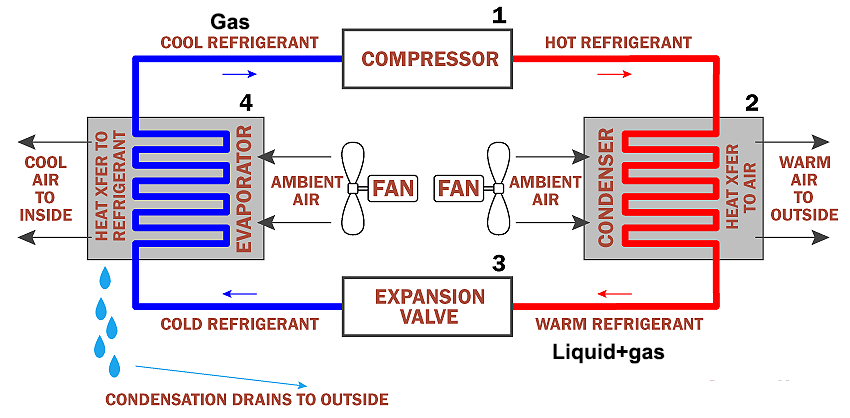Physical principle: When a liquid turns into a gas, it will absorb a large amount of heat from the surrounding environment.
The refrigeration principle of air conditioners is based on the vapor – compression refrigeration cycle. Here is a detailed explanation:
Compression: The compressor in the air conditioner sucks in low – pressure and low – temperature refrigerant vapor. It then compresses the vapor to a high – pressure and high – temperature state. This increases the pressure and temperature of the refrigerant, making it easier to release heat later.
Condensation: The high – pressure and high – temperature refrigerant vapor flows into the condenser. In the condenser, the refrigerant releases heat to the surrounding environment and changes from a vapor state to a liquid state. This process is called condensation. The heat released in the condenser is dissipated into the air outside the room.
Expansion: The high – pressure liquid refrigerant then passes through an expansion valve. The expansion valve reduces the pressure of the refrigerant, causing it to expand and become a low – pressure liquid – vapor mixture. This process also lowers the temperature of the refrigerant.
Evaporation: The low – pressure liquid – vapor mixture enters the evaporator. In the evaporator, the refrigerant absorbs heat from the air inside the room. As a result, the refrigerant evaporates and turns back into a low – pressure vapor. The heat absorbed from the indoor air cools the air, and the cooled air is then circulated back into the room by the fan.
The continuous repetition of these four processes forms the refrigeration cycle of the air conditioner, which continuously removes heat from the indoor air and transfers it outdoors, thereby achieving the effect of cooling the room.
